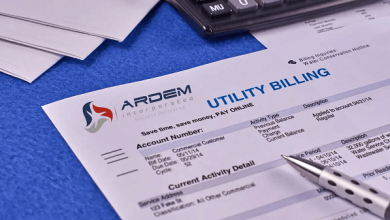Recovering from leg injury tips to get you back on track in no time

Your legs support your whole body. They carry you around all day, enabling you to get from one place to another, run, climb and jump. This is why a leg injury can be particularly troublesome. You’ll find yourself unable to carry on with your usual routine. You’ll either have to do everything at a slower pace or might even find yourself bed-ridden and unable to do anything you used to. This can be incredibly annoying, and if you tend to be active, you’ll probably be left feeling restless and frustrated as you’re coming through the healing period.
However, the best way to ensure you can come through these unpleasant times is to look after your recovery properly, so you are sure to be your old self as soon as possible. This includes both your physical and emotional welfare and making sure you ask for the help of various support networks that can assist you in overcoming the pain and trauma of being injured.
Follow your doctor’s advice
The first thing you need to do after experiencing any fracture is to call the emergency department and get prompt medical care. This is the advisable course of action despite the extent of your injuries. Immediately after being wounded, you might be tempted to think it’s not that bad. But even minor lesions should be checked by a physician. Getting swift medical attention in the case of fractures is vital. Both simple and compound broken bones are dangerous, and not addressing the issues quickly may result in additional problems such as infections or, in rare cases, fat embolisms, which can potentially be life-threatening.
One of the most common methods used to allow broken bones to heal is placing a cast on the leg to immobilise the limb and speed bone healing. Be careful to follow the advice on how to take care of your cast, or recovery will be delayed. For instance, you should make sure your cast stays dry at all times. You should always request additional medical help if the cast becomes wet, broken, or if you are experiencing extreme discomfort, with the cast feeling either too tight or too loose. And keep in mind that your skin might become itchy underneath. This is a common problem, and while it can be extremely annoying, you must refrain from sticking anything underneath it. You can instead turn a hair dryer on the cool setting and aim the airflow under the cast.
If you’re experiencing any pain, you should take painkillers as prescribed. While you should avoid any strenuous activity, make sure you exercise your healthy joints and elbows. When you have a cast on, your blood circulation can become impaired, slowing healing and predisposing you to blood clots. Also, don’t tamper with your cast in any way. Don’t try to change its position and shit it around to be more comfortable. Your physician placed it that way for a reason.
Make a legal claim
If your injury occurred due to someone else’s negligence, you might be liable for compensation. Laying a personal injury claim is made easier with the help of experts that can guide you along the way, but you may still be nervous about having to calculate compensation claims in the UK yourself. This is because determining the exact amount you can receive often depends on your case’s intricacies. Every situation is different, and a professional lawyer is aware that all must be assessed individually. However, some of the critical aspects that legal practitioners always take into account are the severity of the sustained injuries and the extent of the mental and emotional damage following the accident. As such, the sums you can expect to receive are:
- Achilles tendon injury: Ranging from £7,270 to £38,340, depending on the harm being mild or severe, the compensation you’ll receive depends on how serious your symptoms are. If your tendons have been partially or fully ruptured, or if you’re likely to experience lifelong disability, you’ll be inclined to receive a higher sum total.
- Ankle injury: If your physical damage is akin to a sprain that only requires bed rest, painkillers and anti-inflammatory medication to subside, then you’re likely to receive up to £13,740 in compensation. However, in the event of a drastic injury that can cause deformity or marked degeneration of the normal functions of your feet, the compensation fee can span between £50,060 and £69,700.
- Toe injury: Just like in the previous cases, a straightforward, a minor wound that is expected to heal completely in a short amount of time and leave no lasting damage that impairs movement will have a compensation yield of roughly £5,590, whilst wounds necessitating surgical intervention and possible amputation are listed between £13,740 and £56,080.
The extent of the damage you suffered affects the level of compensation you’ll receive. If you’ve been struggling with trauma and mental illness post-accident, you can also claim compensation for emotional damage. However, to get the best idea of what you can expect from the legal proceedings, you should get in touch with an attorney as early as possible to get a consultation and start on the path of obtaining the justice you deserve.
Take your time
Recovery takes time. Although the duration it’ll take for you to heal fully varies depending on the type of injury you have, as well as your pre-existing health conditions, you’ll still have to halt your usual routine and wait a few weeks before resuming your everyday activities. You shouldn’t miss any doctor’s appointment during these weeks, as follow-up is necessary to ascertain your condition, whether or not healing is going as planned, and if any changes for the worse ought to be remedied. In the case of more severe breakages, like femoral fractures, which can take up to half a year to heal completely, you’ll have to go to appointments for a year or more even after the recovery period has finished. While additional treatment, X-rays and frequent visits to the doctor’s office can become tiresome at some point, the process is crucial for your health. In its absence, you can be left suffering from chronic pains and weakness, needing further physiotherapy to heal.
Although it can seem overwhelming, you must go through all the recovery steps to get back on track. If you’re patient and trust the process, you’ll be there in no time.













